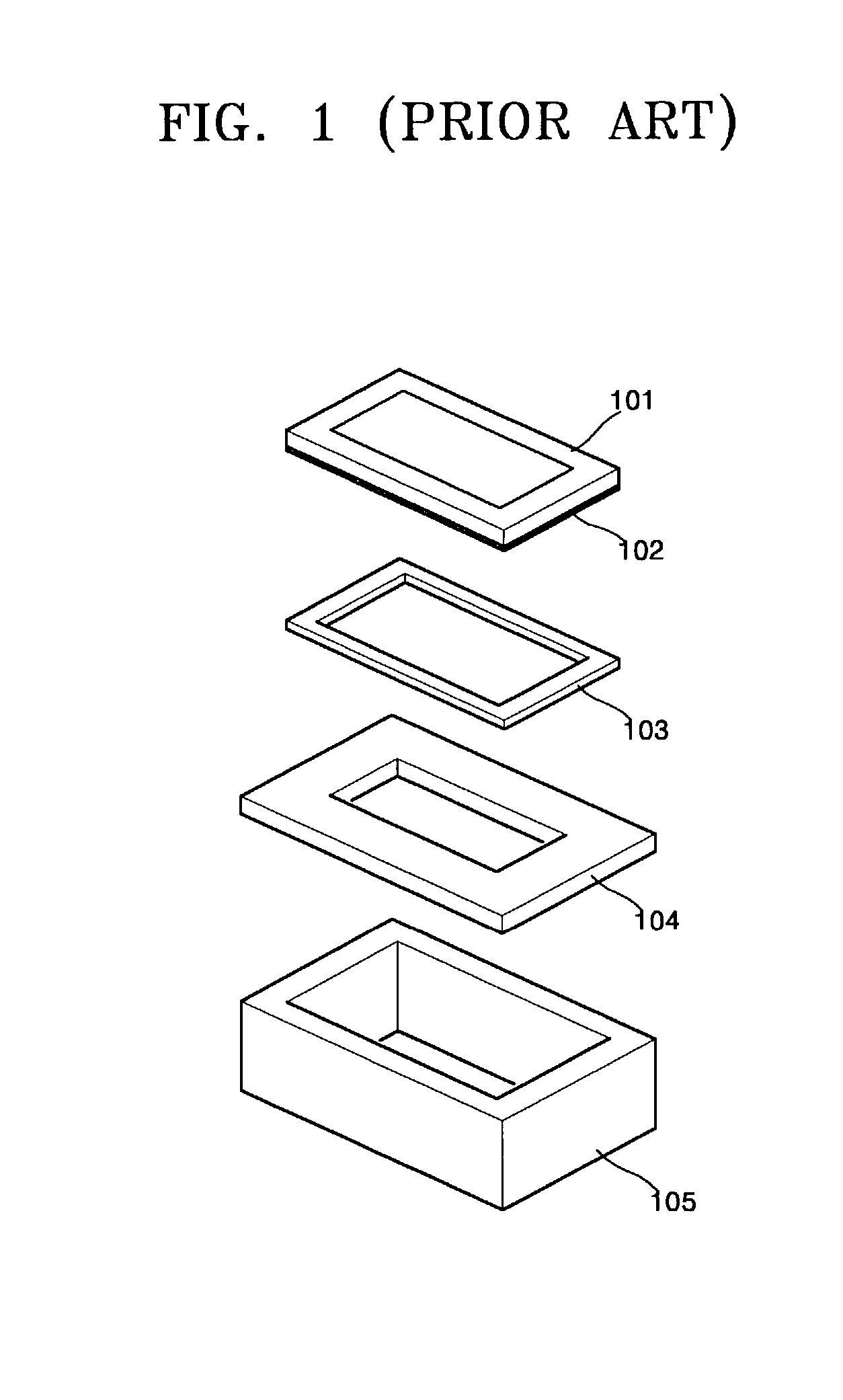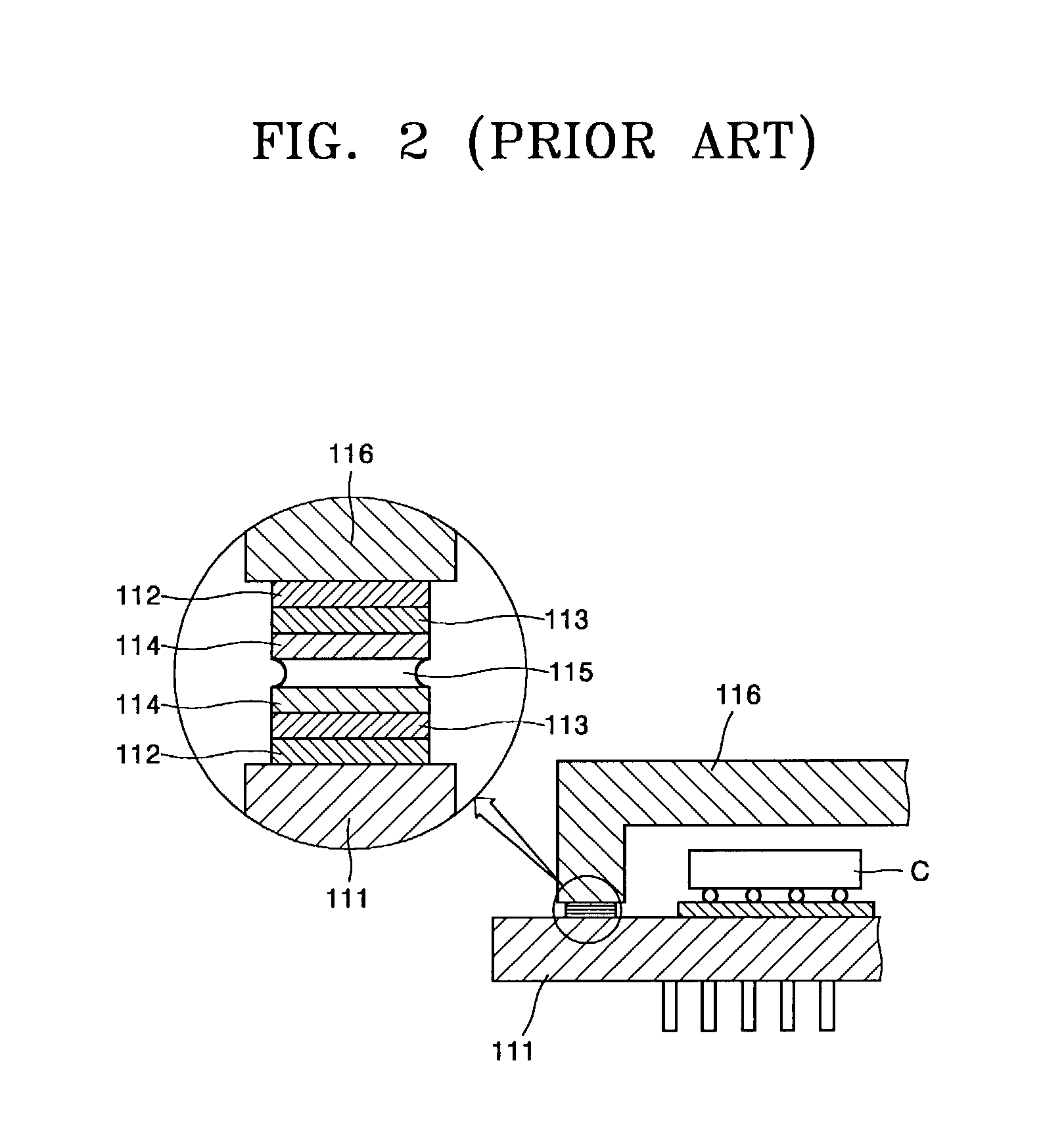Low temperature hermetic sealing method having passivation layer
a low temperature, hermetic sealing technology, applied in the association of printed circuit non-printed electric components, microstructure devices, printing, etc., can solve the problems of weak heat resistance properties, inconvenient frit bonding methods performed at a high temperature, and very thin microstructure of the microstructure, so as to prevent the penetration of water and improve the reliability of the device
- Summary
- Abstract
- Description
- Claims
- Application Information
AI Technical Summary
Benefits of technology
Problems solved by technology
Method used
Image
Examples
Embodiment Construction
[0028]The present invention will now be described in detail by describing illustrative, non-limiting embodiments thereof with reference to the accompanying drawings. In the drawings, the same reference characters denote the same elements.
[0029]FIG. 4 shows a low temperature hermetic sealing method having a passivation layer according to the present invention includes forming a package base 1 with a chip die 3 on which a micro-electromechanical system (MEMS) device 4 is disposed. Also, FIG. 4 shows forming a lid 15, which is to be disposed on the package base 1 to form a cavity 11, and sealing the package base 1 and the lid 15.
[0030]A junction layer 5 and a wetting layer 6 are deposited on a lid frame 2, and a solder layer 7, which is melted at a sealing temperature, serves as a sealant and thereby is maintained in a sealed state with layers contacting both sides of the solder layer 7, and a first protection layer 8 for preventing the oxidation of the solder layer 7 after deposition ...
PUM
| Property | Measurement | Unit |
|---|---|---|
| Temperature | aaaaa | aaaaa |
| Wetting tension | aaaaa | aaaaa |
Abstract
Description
Claims
Application Information
 Login to View More
Login to View More - R&D
- Intellectual Property
- Life Sciences
- Materials
- Tech Scout
- Unparalleled Data Quality
- Higher Quality Content
- 60% Fewer Hallucinations
Browse by: Latest US Patents, China's latest patents, Technical Efficacy Thesaurus, Application Domain, Technology Topic, Popular Technical Reports.
© 2025 PatSnap. All rights reserved.Legal|Privacy policy|Modern Slavery Act Transparency Statement|Sitemap|About US| Contact US: help@patsnap.com



